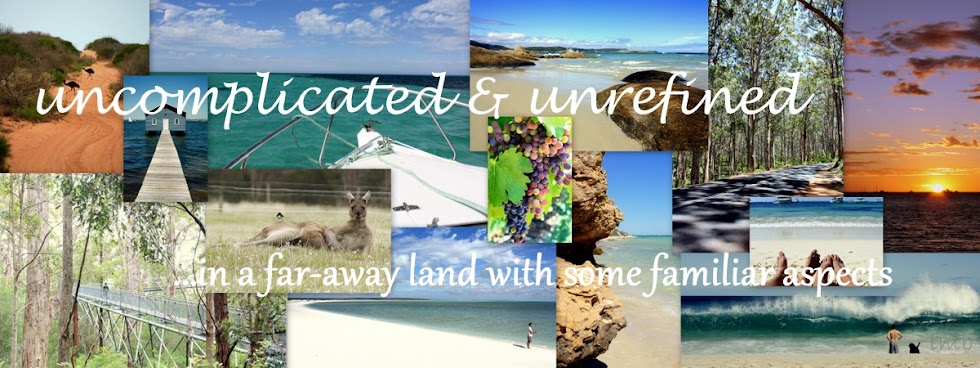 |
| Camel, Cable Beach |
Broome, on the north coast of WA, is one of the state’s most popular and renowned tourist destinations. We recently spent four nights in Broome as part of a 12 day West Kimberly trip. If you’ve seen the movie Australia or watched Oprah’s Australian adventure, then you’ve seen images of the Kimberly region.
This town of less than 15,000 permanent residents is a 2.5 hour flight from Perth or a 2,200 km (1370 mile) drive. We took a fishing boat with us so endured the 22 hour drive from Perth to Broome along the Great Northern Highway which takes you through WA’s Wheat belt, then into the Midwest known for its springtime wildflowers, and finally the Pilbara – the heart of the state’s mining industry. With very little to see beyond dotted grain silos and distant mine sites, you appreciate the isolation and beauty of the landscape but begin to wonder why the hell you didn’t opt for the much quicker (and possibly cheaper) plane flight.
A great many hours on the
Great Northern Highway elicits great conversations such as why does Australia have so many
greats: the
Great Australian Bight, the
Great Barrier Reef, the
Great Ocean Road, the
Great Sandy Desert. Food and accommodation on the drive consists mostly of Roadhouse chips and short sleeps in the back of your 4WD. So after some time it’s only natural to want to strangle your travel companion – especially when they run out of fuel on the exit ramp by your house after travelling 6,500 kms in 12 days and nearly 48 hours with no shower. Clearly all that driving led to a miscalculation of fuel consumption.
While Perth in the south gets 85% of its rain in the winter (June-August), Broome in the north has a tropical climate with a rainy season during the summer. This makes it a popular tourist destination from May to September when it’s dry and hot in the north but cool and rainy in the southern half of the country. This is also why it’s recommended to visit the Great Barrier Reef during Australia’s winter – if you go during summer you’ll be disappointed with rain and sometimes lots of it.
Broome is most famous for three things: the spectacular Cable Beach, its world famous South Sea Pearls and colorful pearling history, and for camel rides on the beach.
Cable Beach is a 22km stretch of white sand and turquoise waters and with a 9 meter tide that still leaves plenty of room to stretch your legs at its height, the beach feels nearly as wide as it is long. It’s also home to Broome’s popular camel rides and is one of Australia’s most famous nudist beaches. It’s a driving beach so even during the busy tourist season you can always find a private spot somewhere along its 22km stretch to park your car and get rid of those tan lines.
Camels were first brought to Australia in the mid-1800’s as a means of traveling across the arid continent and today over 1 million feral camels reside mostly in central Australia, in the Northern Territory. Bully the camel from
Ships of the Desert camel tours took Shane and I on a 40 minute stroll along Cable Beach. We learned that all the camels are brought in from the wild and tamed within six months and were surprised to hear that they drink 22 liters of water a day, although can survive on significantly less.
When Oprah surprised her lucky guests with Pearls they were South Sea Pearls from Broome. We took a two hour pearl farm tour at
Willie Creek Pearl Farm where we learned about how pearls are cultured and valued. To learn a bit about the dangerous and fascinating pearling history which began 150 years ago, you can also take the
Pearl Luggers tour.
We could have easily spent a couple more days in Broome. We missed out on the 130 million year old dinosaur fossil and although this time we stayed at the
Palm Grove Caravan Park I could easily be persuaded to stay at one of Broome’s luxury resorts. Next time we’ll fly.
 |
| Cable Beach |
 |
| Cable Beach |
 |
| Camels, Cable Beach |
 |
| Camels, Cable Beach |
 |
| Camels, Cable Beach |
 |
| Red Dirt, Broome |
 |
| Mother of Pearl, Oyster Shell |
 |
| Oyster (with small brown crab living in top left corner of shell) |
 |
| Willie Creek Pearl Farm |
 |
| Cable Beach |


















































